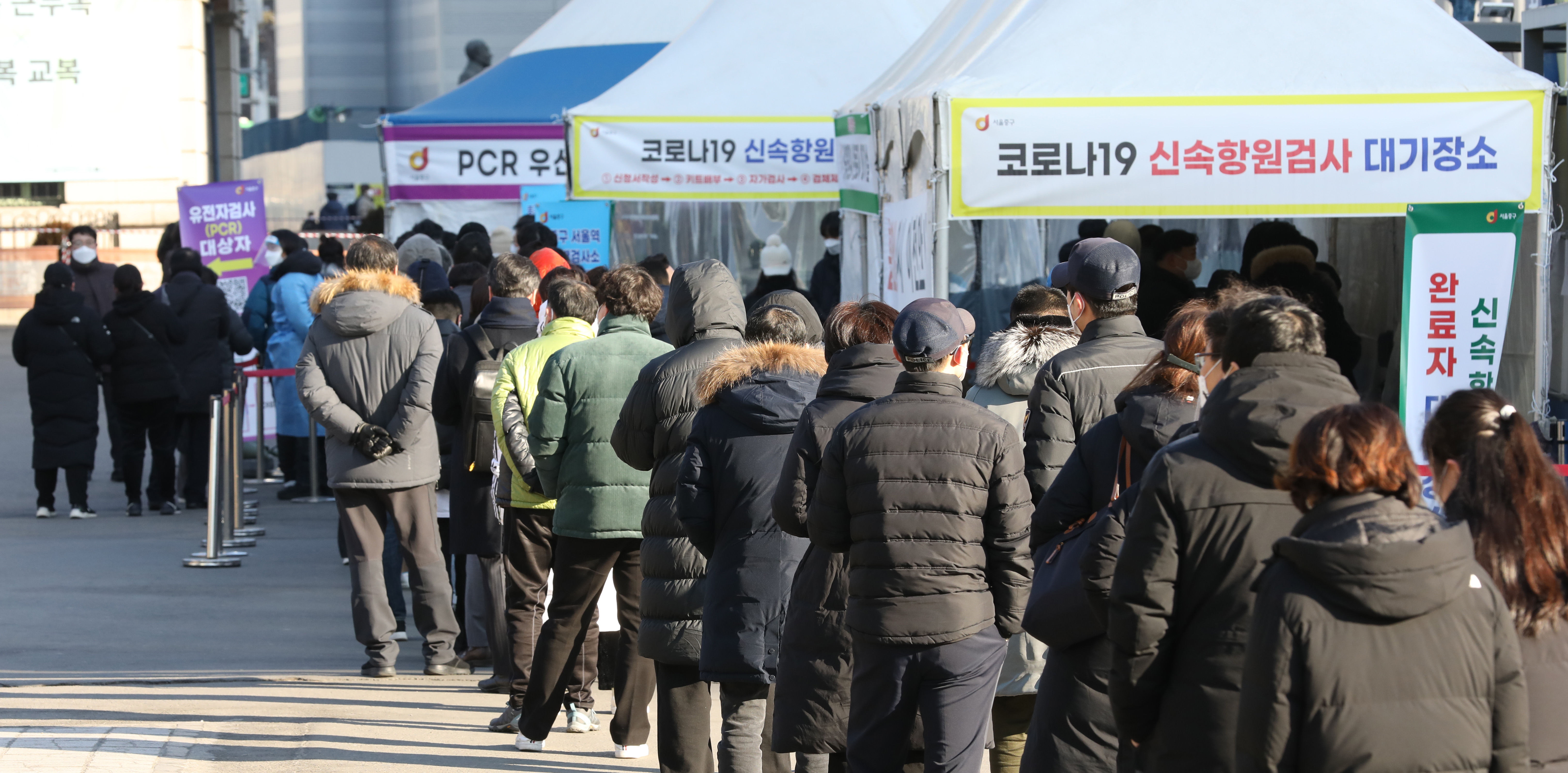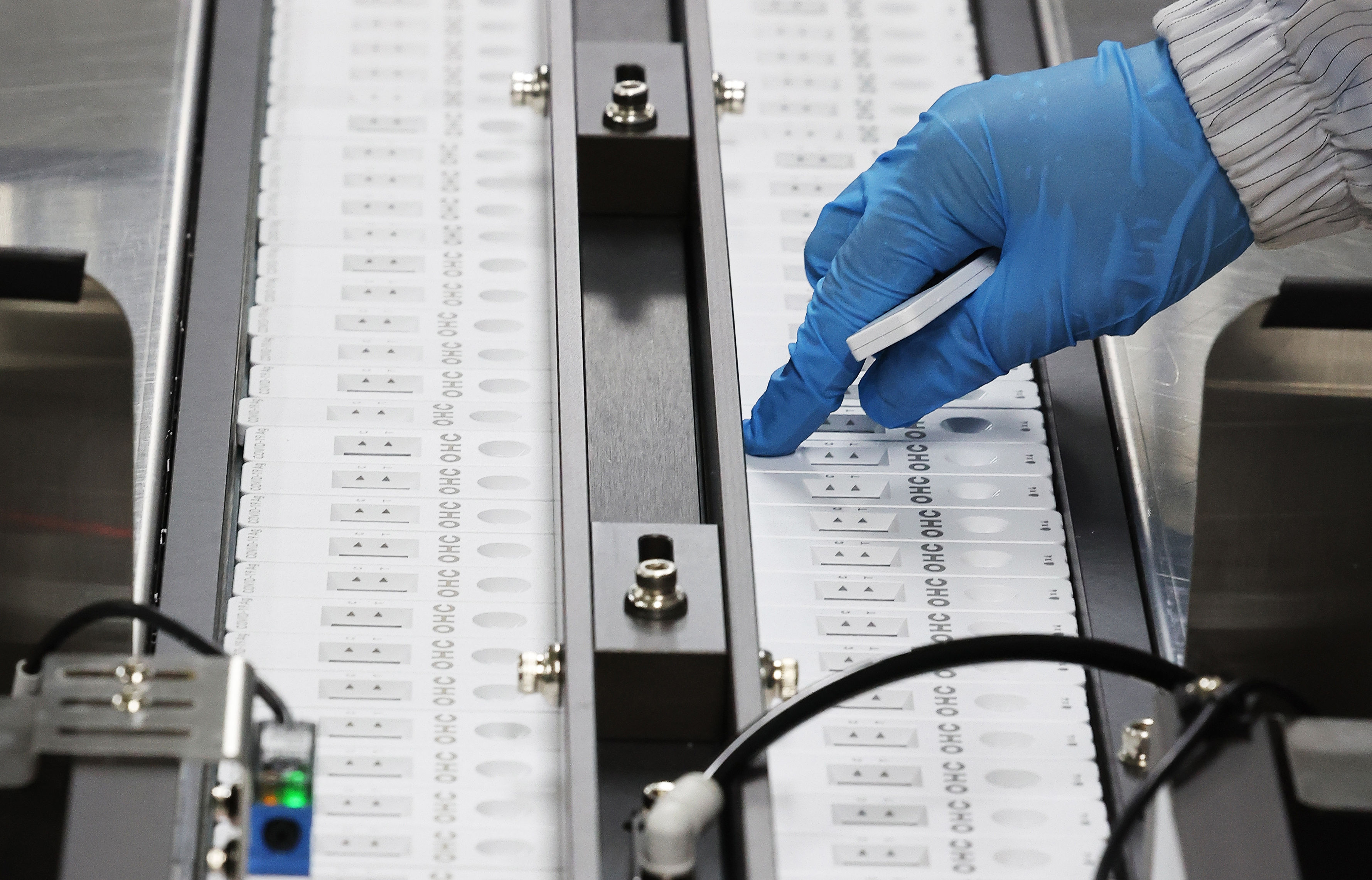Xinhua News Agency, Seoul, February 24 (Reporter Tian Mingdu Baiyu) South Korea’s Central Epidemic Prevention and Control Headquarters reported on the 24th that due to the continuous spread of the mutated new coronavirus Omicron strain, the number of new confirmed cases of the new crown in South Korea in the past 24 hours reached about 170,000 cases. This is the second day in a row that the number of daily confirmed cases in South Korea has exceeded the 170,000 mark. So far, the cumulative number of confirmed cases in South Korea has reached 2.499 million.

On February 23, people line up for testing at a new coronavirus testing point in Seoul, South Korea. Xinhua News Agency/News News Agency
The surge in infections has pushed up the number of coronavirus patients being treated at home in South Korea, reaching a record 58.8 on the 24th At the same time, the number of existing severe cases of the new crown is also on the rise. The number of existing severe cases reported on the 24th reached 581, an increase of 69 cases from the previous day.
In addition, South Korea reported 82 new deaths on the 24th, bringing the total number of deaths to 7,689. Among them, there were 51 deaths in the elderly over the age of 80, and 16 deaths between the ages of 70 and 79. Especially among the new deaths that day, there were also two deaths of young people under the age of 9, which aroused public concern.
Upgrade the peak epidemic forecast:
Daily increase or exceed 330,000 cases
The number of new cases has continued to exceed the expectations of the epidemic prevention department, and the forecast for the peak of the epidemic in South Korea has also been gradually raised. The Department of Disease Management had previously predicted that the wave of outbreaks could peak early next month, when the number of daily cases could rise to 270,000. However, the research results released on the 23rd show that if the current epidemic spread rate, this peak data is likely to exceed 330,000 cases.

On February 23, people line up for testing at a new coronavirus testing point in Seoul, South Korea. Xinhua News Agency/Newsis News Agency
Under the rapid spread of the Omicron strain, South Korea’s epidemic prevention and control system began to respond to the “Omicron Response”. “Model” transformation, that is, strengthening the home treatment measures for mild and asymptomatic patients with the new crown, so as to focus medical resources on critically ill patients and high-risk groups, identify high-risk groups as soon as possible, and prevent severe cases from worsening.
Nonetheless, in terms of epidemic prevention restrictions, the South Korean government continued its policy tone of discussing relaxation of some epidemic prevention measures, and announced on the 18th that it would fine-tune the epidemic prevention measures. The new version of the epidemic prevention measures allows restaurants, cafes and other places to extend the daily business closing time from 21:00 to 22:00, and the maximum number of people for private gatherings remains at 6 people. The epidemic prevention measures will be implemented from the 19th and will be implemented until the 13th of next month.
South Korean Prime Minister Kim Fu-gyeom said at an epidemic prevention work conference held on the 23rd that according to the research of the Center for Disease Control and Prevention, the death rate and severe disease rate of the currently spreading Omi-Kron strain are lower than Previously prevalent delta strains. “While we shouldn’t let our vigilance and containment measures go, there’s no reason to fear the number of infections as much as we used to.”
Loosening of containment measuresExperts worry
In response to the current government policy direction, many epidemic prevention experts expressed concern, believing that relaxing social distancing restrictions is too hasty, it is likely to send wrong signals to the public, resulting in a lax awareness of epidemic prevention in Korean society.

This is a production line of rapid detection equipment for the new coronavirus taken in Gyeonggi-do, South Korea on February 23. Xinhua News Agency/News News Agency
Yoon Tae-ho, a professor of preventive medicine at Pusan National University School of Medicine, said that rather than discussing the occupancy rate of hospital beds and the number of critically ill patients It is the top priority of government policy to ensure the stability and normal operation of the whole society. Considering the widespread impact of the surge in confirmed cases on society, Strict epidemic prevention measures should be maintained until the epidemic peaks.
Yan Zhongzhi (transliteration), a professor of infectious medicine at the Affiliated Hospital of Jiaquan University, also said that due to the inability to ensure that no new mutant strains of the new coronavirus will appear in the future, the antiviral drugs have not yet reached the level of popularization for all patients. In addition, although the lethality rate of the Omicron strain has been reduced, it is far from a level where it does not pose a threat. The government should not loosen restrictions when all conditions are not met strong>. (Editor: Sun Shuo; Editors: Sun Hao, Cheng Dayu, Jin Zheng, Tang Zhiqiang)
produced by the International Department of Xinhua News Agency
produced by the Xinhua News Agency International Communication Integration Platform